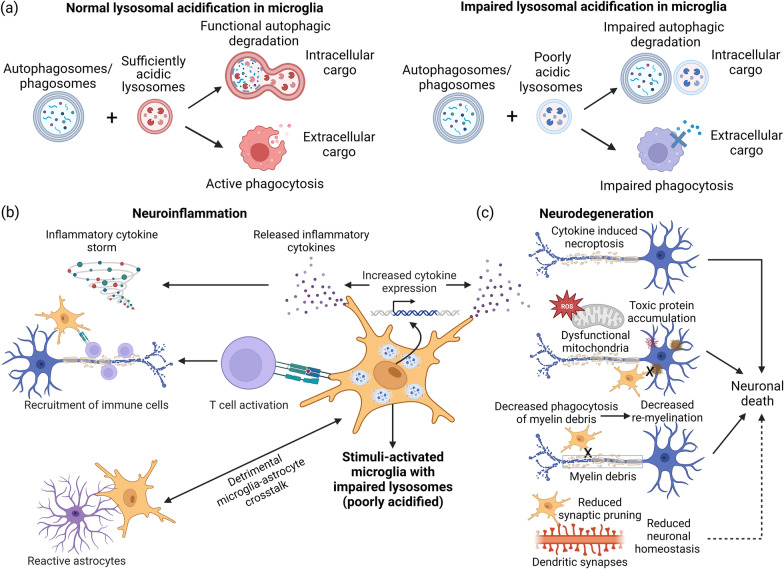Fig. 1.
Implications of microglial lysosomal acidification dysfunction in neuroinflammation and neurodegeneration. a In healthy microglia, lysosomes with sufficiently acidic lumen can fuse with autophagosomes or phagosomes to form functional autolysosomes for efficient degradation of both intracellular and extracellular cargoes (left). Under stimulated or diseased conditions, lysosomes with poorly acidic lumen (impaired lysosomal acidification) will have inefficient fusion with autophagosomes or phagosomes, or even no fusion, leading to reduced phagocytic and autophagic functions (right). b In the context of neuroinflammation, stimuli-activated microglia with impaired lysosomal acidification express and secrete more cytokines to perpetuate neuroinflammation. Through releasing more inflammatory cytokines, these dysfunctional microglia recruit and activate immune cells and participate in detrimental crosstalk with astrocytes to propagate inflammatory response. c In the context of neurodegeneration, increased inflammatory cytokine secretion by dysfunctional microglia with lysosomal acidification defect contributes to neuronal death via mechanisms such as necroptosis. In addition, these impaired microglia have reduced phagocytic and autophagic capabilities in the clearance of toxic protein aggregates, damaged organelles such as mitochondria, and myelin debris, as well as in synaptic pruning, leading to eventual neuronal death and neurodegeneration. The figure was created with BioRender.com

